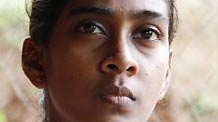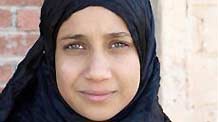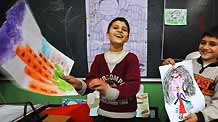Poverty Level of Brazilian Children Remains High
Adjust font size:
Despite the decrease in Brazil's social inequality indicators in the past few years, recent studies have shown that the poverty level of the country's children and adolescents remains high.
According to Summary of Social Indicators (SIS) released recently by the Brazilian Institute of Geography and Statistics (IBGE), some 26.2 percent of the Brazilian children lived in families with household per capital income equal to half a minimum wage in 2008, down from 32.4 percent in 1998.
In 2008, Brazil's minimum wage was 415 reais (US$244). This year, it increased to 465 reais (US$273).
The IBGE attributed the improvement to the government's successful programs implemented in the past years and the stabilization of the country's economy.
In the poorer northeastern region, 66.7 percent of the children, teenagers and youngsters still lived in poverty, while in the richer and more developed southern region, the figure fell to 28.7 percent, the report said.
The study highlighted that household income helped determine school attendance rate, which increased as the level of families' income did.
For children of four to six years old, the rate of school attendance was 77.1 percent for families living with a per capital income of half a minimum wage and the figure jumped to 98.8 percent for those with a per capita income of three times of a minimum wage, according to the report.
The school attendance rate of teenagers aged 15 to 17 in the poorest 20 percent families was 78.4 percent and for teenagers in the richest 20 percent families, the figure was 93.7 percent.
The trend to increase of attendance to school in infancy was observed, although at a lower rhythm. The biggest increase of the rate occurred in the group aged four to six, from 57.9 percent to 79.8 percent between 1998 and 2008, the report said, adding that among children aged zero to three, school attendance rate changed from 8.7 percent to 18.1 percent in the same period.
The percentage of youngsters attending university recorded a big increase in the past decade. In the group aged 18 to 24, 13.9 percent of youngsters attended colleges in 2008, up from 6.9 percent in 1998.
The increase could be attributed to the improvement of the infrastructure of public universities and more scholarships offered by the government to private institutions.
Even so, the percentage was low compared with developed countries such as France and Britain, where the proportion was 50 percent higher, or some other Latin American nations such as Chile with 52 percent, said the report.
On the other hand, there was significant improvement in the distribution of attendance by level of schooling among the white, black and brown Brazilians from 1998 to 2008.
In 2008, white youngsters aged 18 to 24 attending high school made up 60.3 percent of the total, whereas among blacks and browns, the rate was 28.7 percent, according to the report.
In 2008, in terms of the years of schooling of the population aged 15 and above, white Brazilians had an average of 8.3 years of schooling while the blacks and browns had an average of 6.7 and 6.5 years of schooling respectively.
Even though the educational indicators improved significantly from 1998 to 2008, many children in Brazil still had to quit school to get a job.
According to the IBGE, there were 4.5 million workers aged five to 17 in Brazil in 2008, which amounted to 10.2 percent of the total population in this age group.
And there were sharp differences among the regions in terms of child labors. In the northeast of the country, the number of child labors aged five to 17 reached 1.7 million which meant 12.3 percent of the population in this age group, the IBGE said.
While in the southeastern region, the figures fell to 1.3 million, or 7.9 percent of the population in this age group, it added.
(Xinhua News Agency November 19, 2009)





